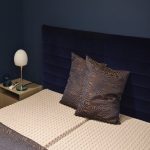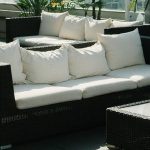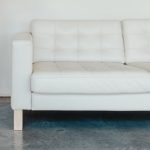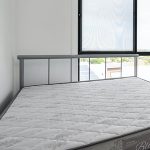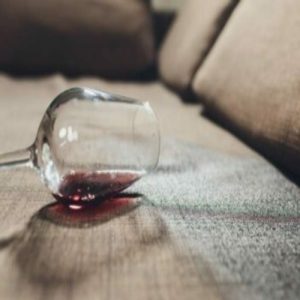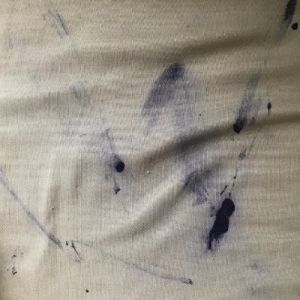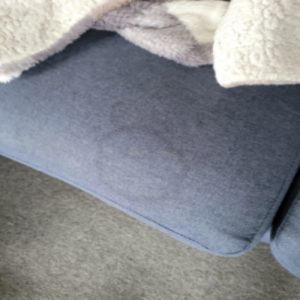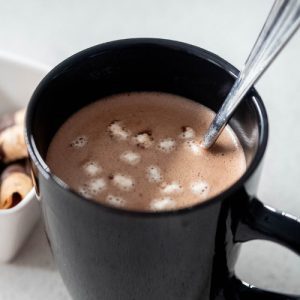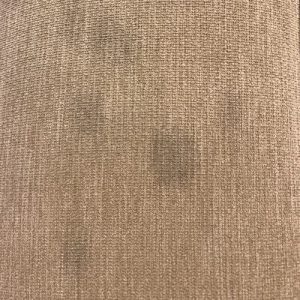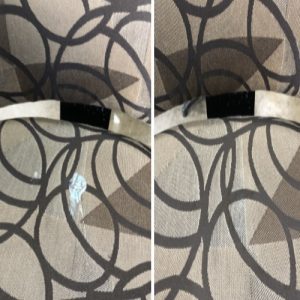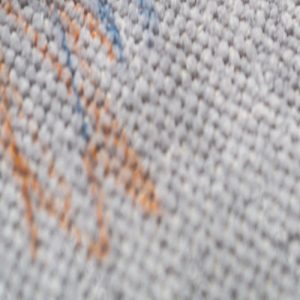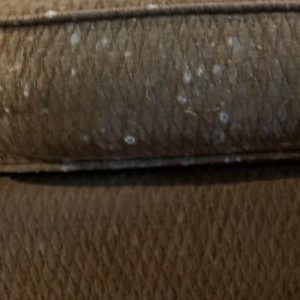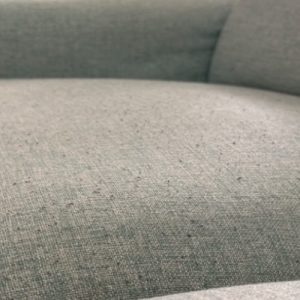Cleaning Upholstery
Cleaning upholstery is a task that can easily go wrong and result in potential damage. This is because each type of fabric can handle different levels of heat, agitation, and moisture compared to others.
Some fabrics can be steam cleaned while others will be severely damaged if steam is applied. Other types of fabrics can be dry clean only while others have manufactures specifications to not use hot water extraction.
This is why it’s good to use professional upholstery cleaning services to do specialised upholstery stain removal for you including applying fabric protection after the clean to increase the lifespan of your furniture and keep it cleaner for longer without the need to find an upholstery shop.
Upholstered furniture is a great addition to your home décor and is also functional. It serves as a cozy little space where comfort is at its peak but have you ever wondered how to properly clean it? Or get a tough stain out?
It’s often such a burden to think about cleaning your upholstery because throwing it into a washer is not always possible. But it doesn’t have to be so complex! You don’t need to ban food and drinks or pets on your upholstery to ensure it stays in peak condition.
All you need is a few tricks up your sleeve on what to do about certain stains, and you’ll always have your upholstery in good-looking condition all the time.
We follow the upholstery cleaning codes to manufacturers specifications to ensure the correct method is used every time. But if you want to have a go at it yourself, here are some general tips, tricks, and advice for cleaning upholstery yourself:
The first step in cleaning upholstery is identifying the type of fabric you have, Different fabrics require different cleaning methods, so make sure you know what you are dealing with before you start.
Quite often, upholstery cleaning codes will be written on a tag or label somewhere on a lounge, couch, or sofa so you can look here.
Some types of fabrics can’t handle much moisture or heat while others can handle a lot. It’s very important that you identify the type of fabric before you attempt to clean it because this will greatly influence what you use and how you use it.
Wool does not get cleaned the same way that polypropylene does and viscose will not be cleaned the same way that nylon will, so it’s imperative to first identify the type of fabric before you attempt to clean it.
Do Not Remove The Tags
One of the most overlooked tips when it comes to the maintenance of upholstery is keeping the tags on. There’s nothing wrong with removing the tags on your upholstery if you think it ruins the aesthetics of your home, but there’s also no harm in keeping them. Keeping them on will be even more beneficial because you can refer to the manufacturer’s guidelines for cleaning the upholstery anytime.
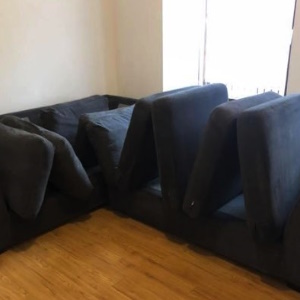
Most upholstered furniture is made with fabrics that give users certain features like stain or water resistance. These items often come pre-treated to ensure the product lives up to the claim. This is why manufacturers add the tags with washing instructions to ensure the fabric does not deteriorate because of an unsuitable cleaning process.
In general, you’ll find three different kinds of fibres used to craft upholstered furniture
• Plant-based (wool and cotton)
• Protein-based (leather)
• Synthetic (plastic)
All these fibres require different maintenance and cleaning to ensure they do not sustain any significant damage. And saving those tags on your upholstery will ensure that you always have something to go back to and refer to should there come a time when you need to clean it.
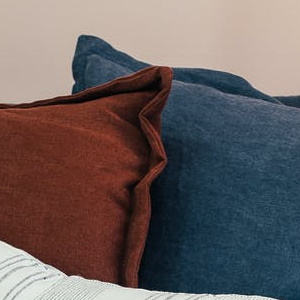
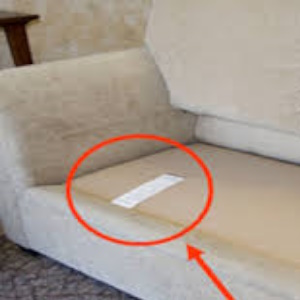

Common Fabric Cleaning Codes And What They Mean
• S: This code signifies that you should only sport clean this fabric. That, too, is only with solvent-based or fabric-safe solvents. As an alternative, you can also dry clean this product.
• W: This means this fabric is only safe to clean with water-based products. This also means using a steam cleaner on the product is safe.
• X: You can only use a vacuum cleaner or dry this fabric.
• Wash: This code is equally found in upholstered furniture with removable fabric. For example, a cushion, sofa, or ottoman covers with fabric that you can safely remove. These are much easier to take care of because you can easily pop them in your washer and have it cleaned and ready to use again in no time. In most cases, you are recommended to only use cold water to wash the fabric in the lowest or gentle wash setting. When it comes to drying, you can tumble dry on low heat or air dry.
• S/W: This means you can use water- and solvent-based cleaning products on the fabric.

Brisbane Upholstery Cleaning
Servicing All of Brisbane
Step By Step Guide To Cleaning Upholstery
1. Remove all the debris and dirt from the surface of the furniture by using a vacuum cleaner or a soft bristle brush to get into the tight corners.
2. If you have stains caused by silly putty or mud and dried ketchup, you’ll need something to scrape off your upholstery before using the vacuum. Refrain from using anything sharp. (A spoon is a good tool to remove these kinds of residue)
3. Assess the area to find any stains that might require your attention.
4. Spot-treat the problem areas by using a suitable cleaning product or solution. Make sure to refer to the tags and cleaning instructions that come with the product so you don’t damage the fabric.
5. Use gentle cleansers such as mild dish soap, fabric detergent, or water to clean the stain if possible. You can also try baking soda or vinegar to remove the stain. If you must use a stronger solution, dab it onto the surface with a clean cloth or towel and start blotting.
6. Always have a microfiber cloth or paper towel handy to absorb any excess moisture from the surface.
7. Never rub the paper towel or move in circular motions when the area is still wet because it will only rip it into pieces, and it might get lodged between your upholstery fabrics.
8. If you use vinegar to clean the stain and want to remove the smell, you can use a mild soap solution with water in the area. Make sure to rinse with clear water and blot to remove excess water after you’re done.
9. For leather upholstery, it is best to avoid detergent or antibacterial sprays to avoid damaging the leather. Instead, use a damp cloth soaked in hot water and a manufacturer-recommended leather upholstery cleaner.
Common Stains When Cleaning Upholstery
When it comes to cleaning upholstery, there are a few common stains and marks that will occur more than others. If you want general tips for cleaning upholstery, then keep scrolling down. If you have some of the stains or marks listed directly below, then click on the link corresponding to your issue for tips on cleaning it.
Best Methods For Cleaning Upholstery
How to Clean Upholstery With Baking Soda
Baking soda can be a great way to clean upholstery. It’s natural, effective, and doesn’t leave any harmful residues. To clean upholstery with baking soda, simply sprinkle it onto the fabric and gently agitate it in. Then, vacuum off the baking soda, and your upholstery could be clean and fresh-smelling!
Alternatively, you can sprinkle the baking soda, spray an upholstery cleaner over it and then agitate the mixture into the fabric followed by extracting it with a towel or wet-vac.
How to Clean A Fabric Chair
1. Identify the type of fabric and what levels of heat, moisture, and agitation it can handle
2. Pre-vacuum the entire chairs fabric
3. Apply your cleaning solution
4. Agitate the solution into the fabric
5. Either extract or let dry depending on the solution
How to Clean A Lounge
There are a few ways to clean a lounge. One is to vacuum it to remove any dirt or debris after you identify the fabric type. Then, agitate the lounge with a slightly damp cloth with your cleaning solution on it to remove stuck-on grime. Finally, use a soft brush to scrub the fabric’s surface and restore its appearance gently.
Another option is to use a mixture of cool or luke-warm water and mild detergent, which can help remove stubborn stains and dirt. You can also add a little vinegar to the mixture for extra cleaning power if you want. Whichever method you choose, be sure to dry the lounge well and let it air dry completely before using it again.
How to Clean A Sofa
Sofas can be cleaned with a vacuum cleaner, steam cleaner, and upholstery shampoo:
1. Identify the type of fabric
2. Vacuum the sofa to remove any loose dirt, dust, or crumbs
3. Apply an upholstery shampoo and agitate it in
4. Extract the solution or let it air dry depending on how the solution works
5. Try to dry the sofa as quick as you can with cold air. Depending on the type of fabric and how soiled it is, repeat these steps as needed to keep your sofa looking and feeling clean and fresh.
How to Clean A Couch
You can clean a couch by vacuuming it, using a steam cleaner, and an upholstery shampoo.
1. Identify the type of fabric
2. Vacuum the couch to remove any dust or dirt
3. Apply your cleaning solution and agitate it in
4. Extract or leave the solution in depending how it works. Depending on the type of couch and the condition it is in, you may need to use a different method or combination of methods to get it looking sparkling clean. Whatever method you use, be sure to follow any instructions provided by the manufacturer for optimal results.
How to Clean Leather
Leather is a natural material that needs to be cleaned and conditioned regularly to look and feel its best.
For cleaning leather, firstly, identify the type of leather you have because this will determine how it gets cleaned. If it’s painted leather, you do not want to wet it as this will make the dyes run.
If it’s pigmented, aniline, or semi-aniline leather, then you should be ok to use an upholstery shampoo and leather conditioner.
If it’s safe to proceed, vacuum the surface of your leather item to remove any dirt or dust.
Next, apply your cleaning solution to small sections and gently brush it across the material with a very soft brush.
Finally, use a dry cloth to remove any excess moisture, and then apply a leather conditioner or moisturiser to enhance the sheen and suppleness of your leather. If you follow these steps regularly, your leather will look great for years to come!
How To Get The Best Results
To get the most out of upholstery cleaning, a professional company performing the service for you should deliver the best results. Brisbane Upholstery Cleaning offers a range of professional services that can clean many different types of fabrics to an incredible standard.
We service commercial venues and can also clean other items such as mattresses, bed heads, and outdoor furniture with amazing results. Get in touch with us to experience the best upholstery cleaning service in Brisbane.
DIY Remedies for Spot Treatment on Upholstery
Regarding upholstery, the sooner you clean the stained area, the better the chances you can effectively eliminate it. However, you still have to refer to the cleaning instructions on your tags to know what cleaning solutions are safe for the fabric, no matter how small the spot is.
If you’re apprehensive about the stain or spot spreading or bleeding onto the other parts of your furniture, you can always use a vacuum to suck up the excess moisture and proceed with a suitable cleaning solution.
Oil or Grease Stains:
Sprinkle some salt on the area. Let it sit and soak up the excess moisture for a few minutes. Get some soapy water, and using a sponge, gently start dabbing the area to get the stain out. If it doesn’t work, you can use rubbing alcohol instead of salt, but you still have to let it sit for a few minutes before dabbing it with a paper towel or a sponge.
Crayon Stains:
Use a cream-based toothpaste and spread it all over the stain. Let it sit for a few minutes, and start scrubbing it gently. Once the crayon marks are gone, you can rinse the area with clean water. Make sure that you dry the area completely.
Coffee Stains:
Mix equal parts of water and vinegar and blot it on the spot. Let it rest for a few minutes, and start scrubbing with a sponge. Make sure to draw out the excess water with a paper towel or a microfiber cloth to prevent water logging. You can also add detergent to the solution if you want.
Red Wine Stains:
Sprinkle some salt on top of the problem area. Once the wet stain is all absorbed, blot with a little lemon juice or hydrogen peroxide. Once the stain is removed, use clean water to rinse the area and dry using a cloth or paper towel.
Blood Stains:
You can pour a little hydrogen peroxide on the surface. Alternately, dab the solution on a cotton pad and start blotting the area. Change the cotton pad as needed and clean it with water once the stain is eliminated. Air dry completely before use.
General Stains:
Club soda is a versatile cleaning solution for most upholstery. Use a cloth or a cotton pad to dap it on the surface until the stain disappears. Alternatively, you can use vinegar and water or mild dish soap. For all these methods, letting the solution sit in the stain for a few minutes helps in getting the stain out more effectively.
Cleaning upholstery can be a drag sometimes, but it’s not ending in permanent damage. You can use many remedies to ensure your home upkeep is always top-notch.
If you have toddlers or pets in the house, using a protective layer for your upholstery is a good idea to prevent maximum damage. You can use blankets and throws to make it look aesthetically pleasing and functionally save your upholstery from accidents.
Get A Quote
For The Best Brisbane Upholstery Cleaning Service
-
Emergency
Call Now
-
Or


